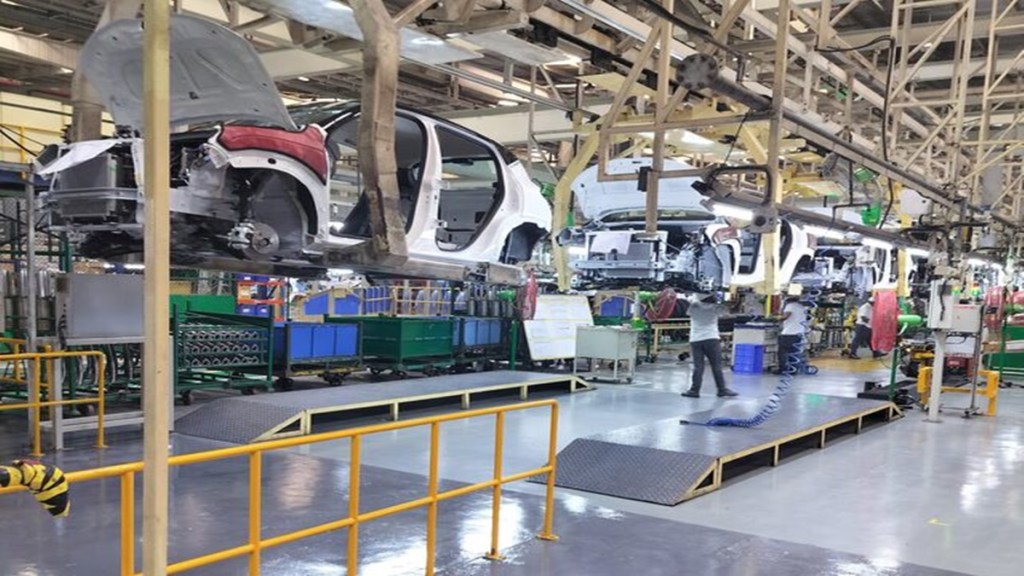India’s automotive component sector is expected to post a revenue growth of 7-9 per cent this fiscal, mirroring the previous fiscal, stated a report by Crisil Ratings. The growth, it added, will be driven by sustained demand momentum from two segments – two-wheelers (2Ws) and passenger vehicles (PVs), especially utility vehicles, which account for nearly half of the overall revenue.
Per the findings of the report, a moderate uptick in commercial vehicles and tractors sales (nearly 17 per cent share) will provide an additional tailwind. The aftermarket segment (15 per cent share in revenue) is seen ticking along steadily at 5-7 per cent.
However, weak demand for new vehicles in the US and Europe, which make up for around 60 per cent of India’s exports, presents headwinds.
Crisil Ratings said that operating margins are seen stable at 12-12.5 per cent and this will be driven by growing share of high-margin components such as ADAS modules, infotainment systems and advanced braking. Profitability, meanwhile, will be supported by a decline in input cost — particularly of steel (45-50 per cent share in input costs), aluminium (15-20 per cent), and plastics (10-12 per cent) — used for structural rigidity, reducing vehicle weight and for interiors. But pressure from new tariffs announced by the Donald Trump administration can dent the margins of companies exporting largely to the US.
The brokerage firm said that the continuing high capital spend will be funded primarily by internal accruals. This, along with tight control over working capital, will ensure low dependence on external borrowing, keeping credit profiles stable.
Crisil Ratings analysed automotive component makers, accounting for nearly 35 per cent of sector revenue of approximately Rs 7.9 lakh crore last fiscal, to release the findings of the report. That said, demand trends are expected to vary amongst the three key segments that automotive component players cater to, i.e., original equipment manufacturers (OEMs), aftermarket and export segments.
Poonam Upadhyay, Director, Crisil Ratings, said, “Demand from automotive OEMs, contributing two-thirds of total revenue, is expected to grow 8-9 per cent this fiscal, with value outpacing volume on rising safety, emission and electronic content, especially in PVs and 2Ws. The aftermarket segment will log a steady 6-7 per cent growth, supported by an ageing vehicle base. Export growth, however, will moderate to 7-8 per cent amid weak demand for internal combustion engine vehicles and a deceleration in electric vehicle (EV) adoption across the US and Europe.”
The US, while contributing just around 5 per cent to total revenue, commands a dominant 28 per cent share of export earnings and is the fastest-growing auto component market. The 25 per cent tariff planned by the US can hurt companies heavily reliant on this geography.
Anil More, Associate Director, Crisil Ratings, said, “The share of high-margin, technology-intensive components now account for ~27 per cent of the segment’s revenue, up from ~18 per cent before Covid-19, driven by premiumisation, and stricter emission norms. This structural shift, along with easing input costs, will help players sustain operating margins at 12-12.5 per cent this fiscal despite the global headwinds. However, companies with high export dependence on the US market may see margins compress 125-150 basis points amid limited ability to pass on tariffs.”
To conclude, Crisil Ratings said, the sector’s credit outlook for this fiscal is stable owing to strong cash flows and minimal debt addition, despite sustained capex of around Rs 22,000 crore for scaling EV capabilities, automation and precision manufacturing. However, with EVs forming just around 4 per cent of PV volume, their revenue contribution remains marginal, keeping returns from this category of vehicles muted in the near term.
Going forward, it said, domestic OEM demand trends, raw material and freight cost volatility, global demand shifts, and the impact of US reciprocal tariffs on export performance will be monitorable.
